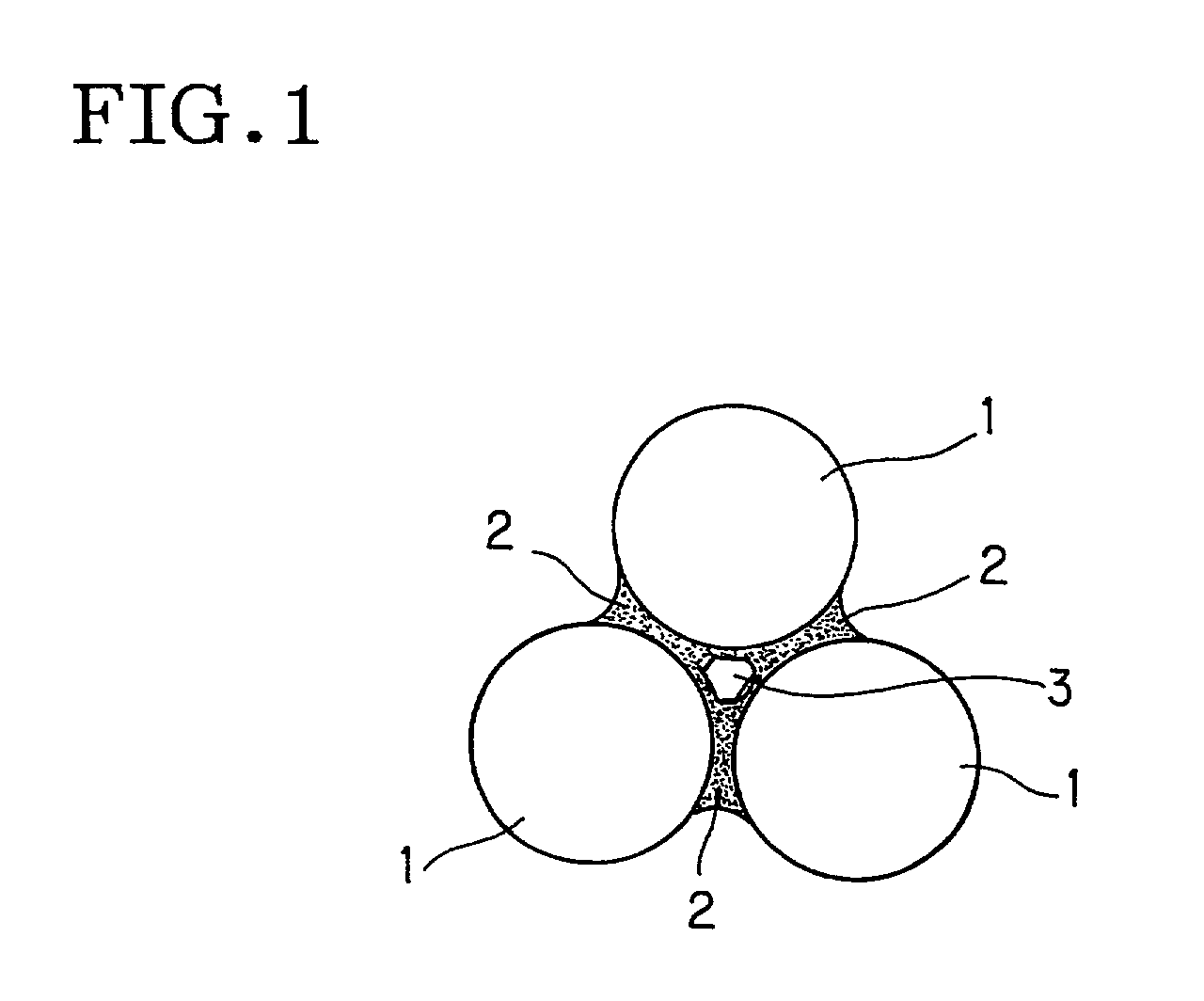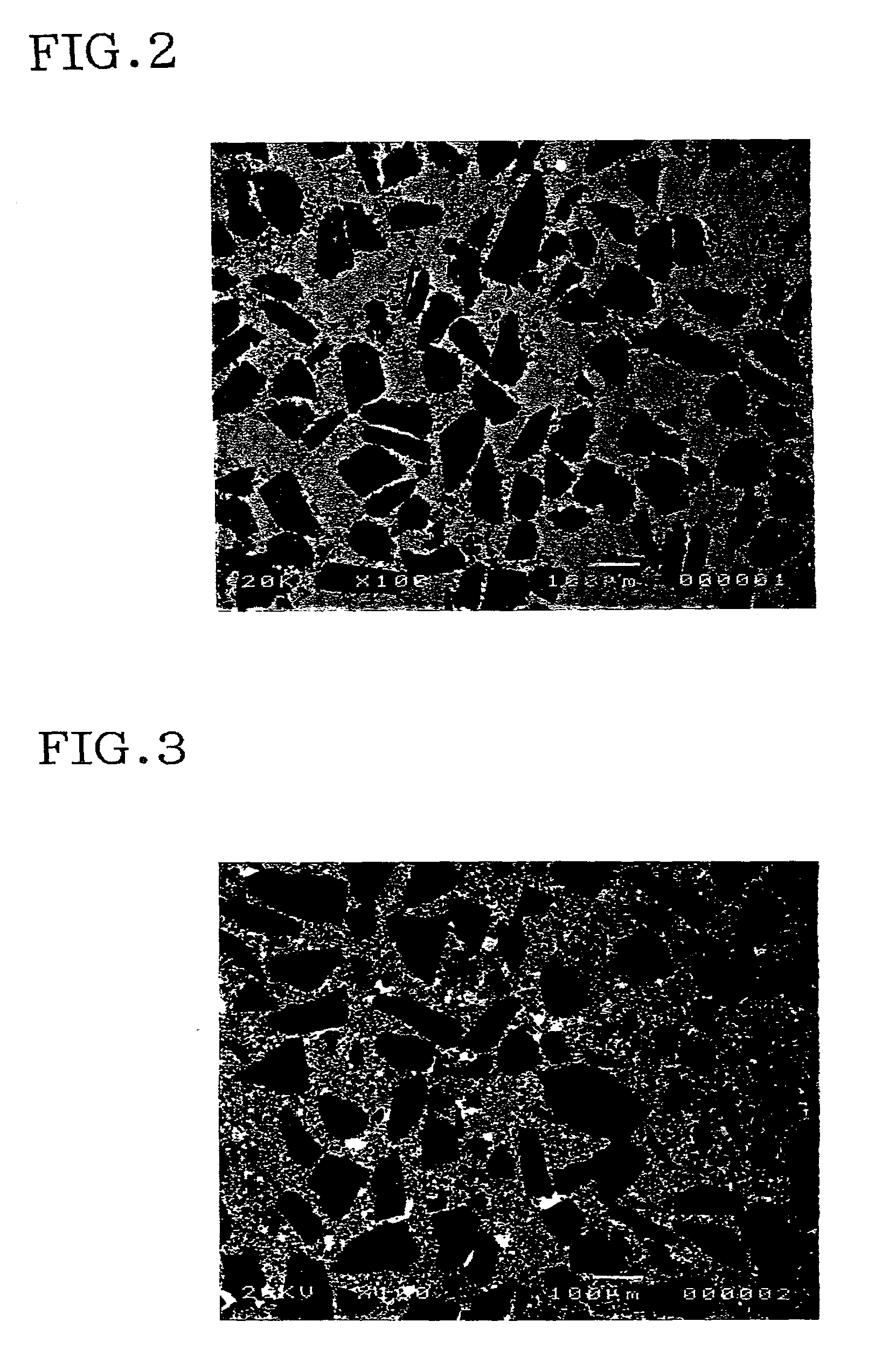Method of producing metal/ceramic composite, and method of producing porous ceramic body
a technology of ceramic body and metal, which is applied in the field of producing metal/ceramic composites, can solve the problems of short service life of molds, inability to mold thick-wall products, and inability to press molds for complex shapes
- Summary
- Abstract
- Description
- Claims
- Application Information
AI Technical Summary
Benefits of technology
Problems solved by technology
Method used
Image
Examples
example 2
[0045] The porous body of fired SiC prepared in EXAMPLE 1 was impregnated with molten copper by pressing to prepare the Cu / SiC composite. The volumetric Cu contents of the composite samples are given in Table 2.
2 TABLE 2 Sample 4 Sample 5 Sample 6 Starch content (parts by weight) 2.5 10 20 Cu content of the CU / SiC composite 42 48 51 (vol. %)
example 3
[0046] The dried molded body of SiC having the same starch content as in Sample 1 shown in Table 1 was prepared in the same manner as in EXAMPLE 1, and impregnated with Si by placing Si on the SiC dried molded body, heating, and melting to prepare the Si / SiC composite. It had a SiC content of around 34%. FIG. 2 presents the photograph of its microstructure, where SiC and Si are represented by the black and white sections, respectively.
example 4
[0047] A mixture of 100 parts by weight of powdered Al.sub.2O.sub.3 having an average particle size of around 0.5 .mu.m, 0.5 parts by weight of a dispersant (ammonium polycarboxylate salt) and 25 parts by weight of ion-exchanged water was milled in a pot, to prepare the Al.sub.2O.sub.3 slurry. A given quantity of potato starch was added to the slurry, and the mixture was cast into a water-nonabsorptive mold and heated at 85.degree. C. to form the molded body. It was dried to adjust a water content to obtain a dried molded body, debindered in the air, and fired at 1600.degree. C. The porous body thus prepared was then impregnated with molten Al by pressing to prepare the Al / Al.sub.2O.sub.3 composite. Al contents (vol. %) of the Al / Al.sub.2O.sub.3 composite samples (Samples 7 to 11) are given in Table 3.
3 TABLE 3 Sample Sample Sample Sample Sample 7 8 9 10 11 Starch content 5 20 40 50 75 (parts by weight) Starch and water 57 63 72 76 81 content (vol.%) Open porosity of the 2 30 50 56 ...
PUM
| Property | Measurement | Unit |
|---|---|---|
| Porosity | aaaaa | aaaaa |
| Porosity | aaaaa | aaaaa |
| Thickness | aaaaa | aaaaa |
Abstract
Description
Claims
Application Information
 Login to View More
Login to View More - R&D
- Intellectual Property
- Life Sciences
- Materials
- Tech Scout
- Unparalleled Data Quality
- Higher Quality Content
- 60% Fewer Hallucinations
Browse by: Latest US Patents, China's latest patents, Technical Efficacy Thesaurus, Application Domain, Technology Topic, Popular Technical Reports.
© 2025 PatSnap. All rights reserved.Legal|Privacy policy|Modern Slavery Act Transparency Statement|Sitemap|About US| Contact US: help@patsnap.com


